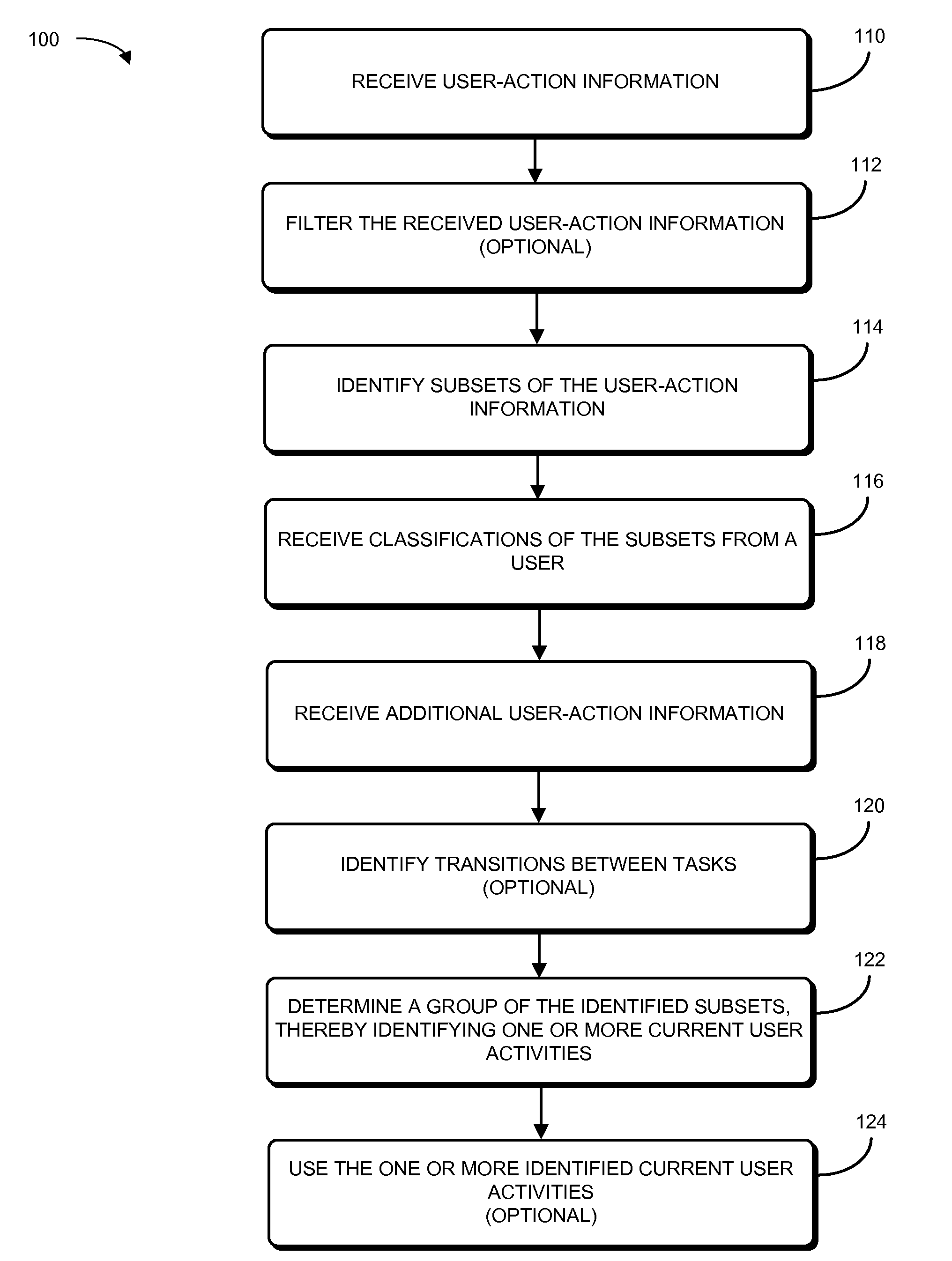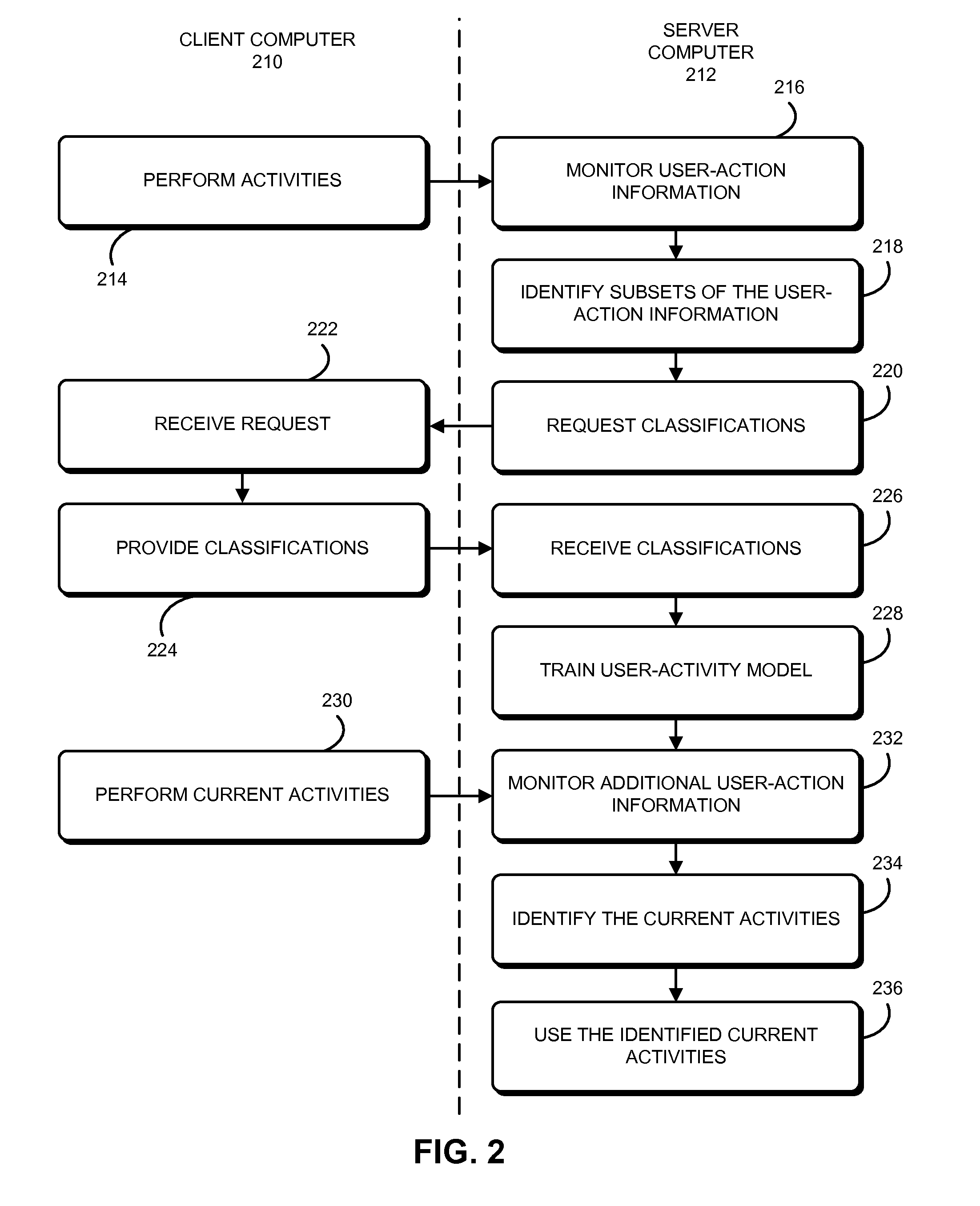Identifying activities using a hybrid user-activity model
a user-activity and activity technology, applied in the direction of user interface execution, instruments, marketing, etc., can solve the problems of time-consuming and annoying training an activity recognition technique, difficulty in accuracy and ease of use, and difficulty in novice users
- Summary
- Abstract
- Description
- Claims
- Application Information
AI Technical Summary
Benefits of technology
Problems solved by technology
Method used
Image
Examples
Embodiment Construction
[0024]Embodiments of a computer system, a method, and a computer-program product (e.g., software) that identify one or more current user activities are described. In a user-activity identification technique, a user's actions are monitored while the user is using a computer. While these user actions are associated with user activities, the user activities are initially unspecified, so the tracked user actions constitute unsupervised data. Then, the tracked user actions are aggregated into subsets (for example, using clustering analysis), and user-activity classifications for the subsets (such as activity labels) are provided by the user, so the subsets constitute supervised data. Subsequently, when additional user actions (which are associated with one or more initially unspecified current user activities) are tracked, they can be associated with one or more of the classified subsets. For example, information about the additional user actions can be mapped in real time (or near real ...
PUM
 Login to View More
Login to View More Abstract
Description
Claims
Application Information
 Login to View More
Login to View More - R&D
- Intellectual Property
- Life Sciences
- Materials
- Tech Scout
- Unparalleled Data Quality
- Higher Quality Content
- 60% Fewer Hallucinations
Browse by: Latest US Patents, China's latest patents, Technical Efficacy Thesaurus, Application Domain, Technology Topic, Popular Technical Reports.
© 2025 PatSnap. All rights reserved.Legal|Privacy policy|Modern Slavery Act Transparency Statement|Sitemap|About US| Contact US: help@patsnap.com



